Acute Myocardial Infarction: Aspirin Core Measure Analysis Report
VerifiedAdded on 2023/06/09
|6
|852
|142
Report
AI Summary
This report delves into the core measures surrounding the administration of aspirin in cases of acute myocardial infarction (AMI). It presents arguments supported by research and methodology, primarily drawing data from databases such as PubMed Central, EMBASE, Cochrane Library, and UpToDate. The analysis synthesizes information regarding the nine core measures associated with AMI, emphasizing the importance of timely aspirin administration, prescription of beta-blockers and statins, and the role of nurses in ensuring medication adherence. The report concludes by reinforcing the significance of these measures in improving patient outcomes and adhering to established healthcare standards.
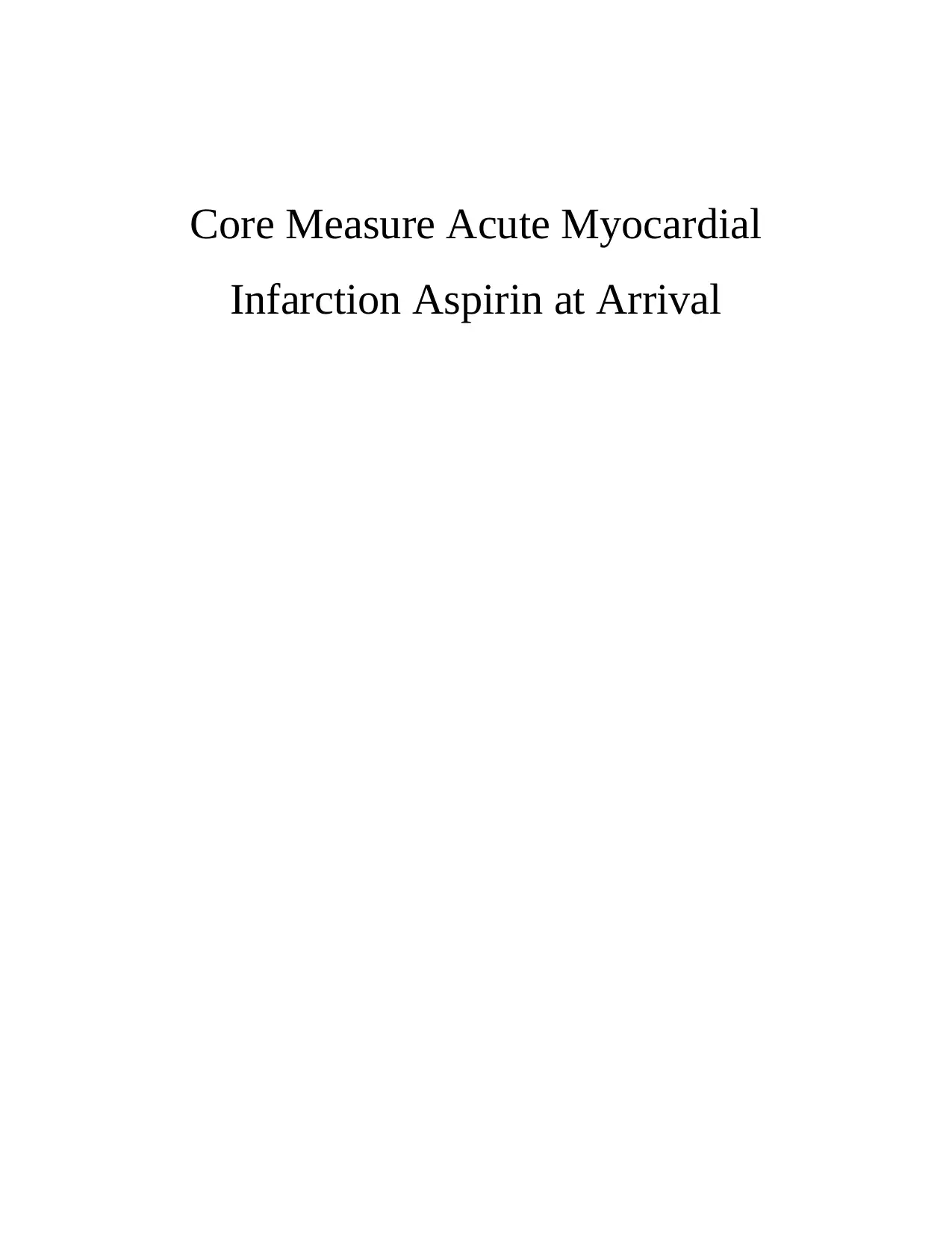
Core Measure Acute Myocardial
Infarction Aspirin at Arrival
Infarction Aspirin at Arrival
Paraphrase This Document
Need a fresh take? Get an instant paraphrase of this document with our AI Paraphraser
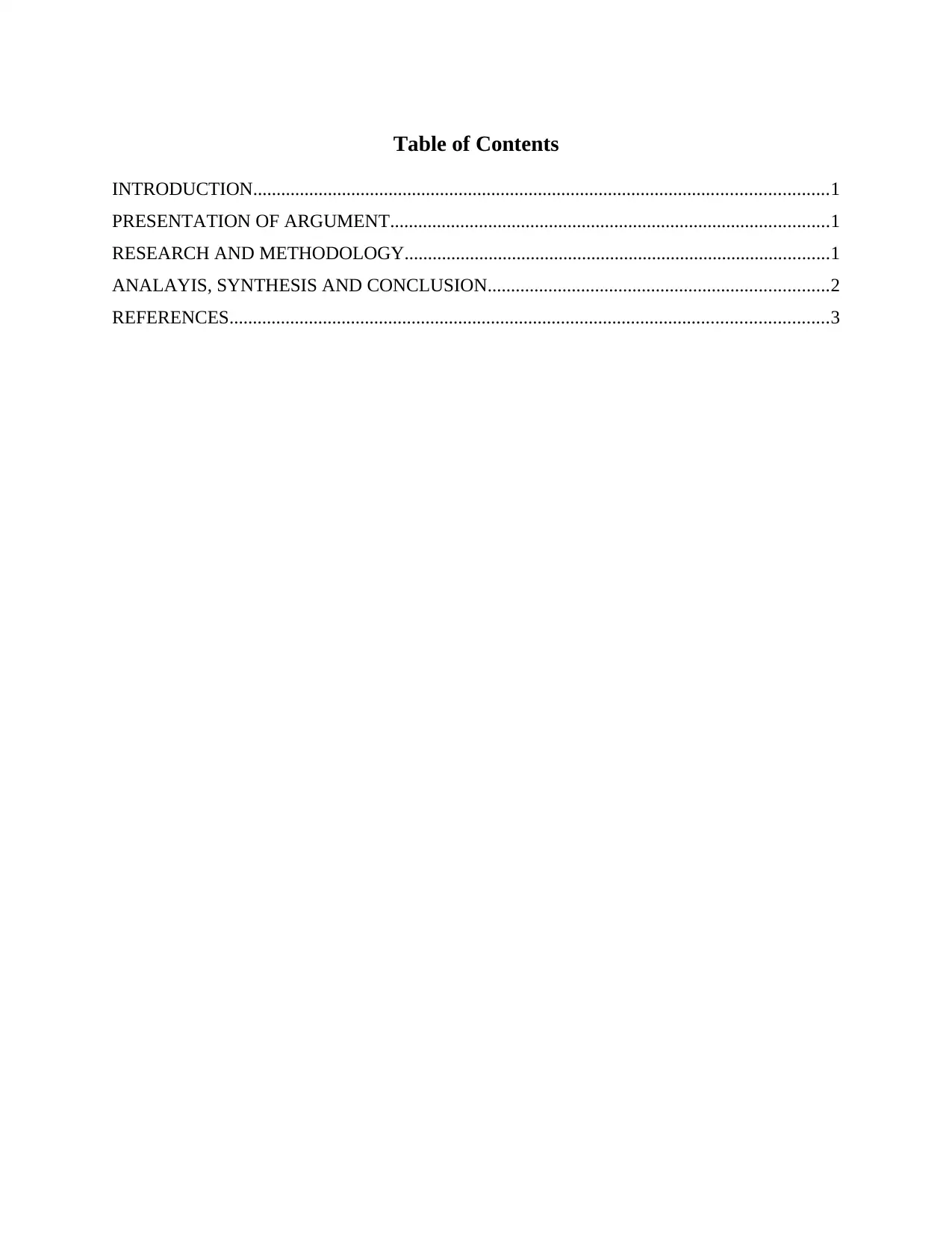
Table of Contents
INTRODUCTION...........................................................................................................................1
PRESENTATION OF ARGUMENT..............................................................................................1
RESEARCH AND METHODOLOGY...........................................................................................1
ANALAYIS, SYNTHESIS AND CONCLUSION.........................................................................2
REFERENCES................................................................................................................................3
INTRODUCTION...........................................................................................................................1
PRESENTATION OF ARGUMENT..............................................................................................1
RESEARCH AND METHODOLOGY...........................................................................................1
ANALAYIS, SYNTHESIS AND CONCLUSION.........................................................................2
REFERENCES................................................................................................................................3
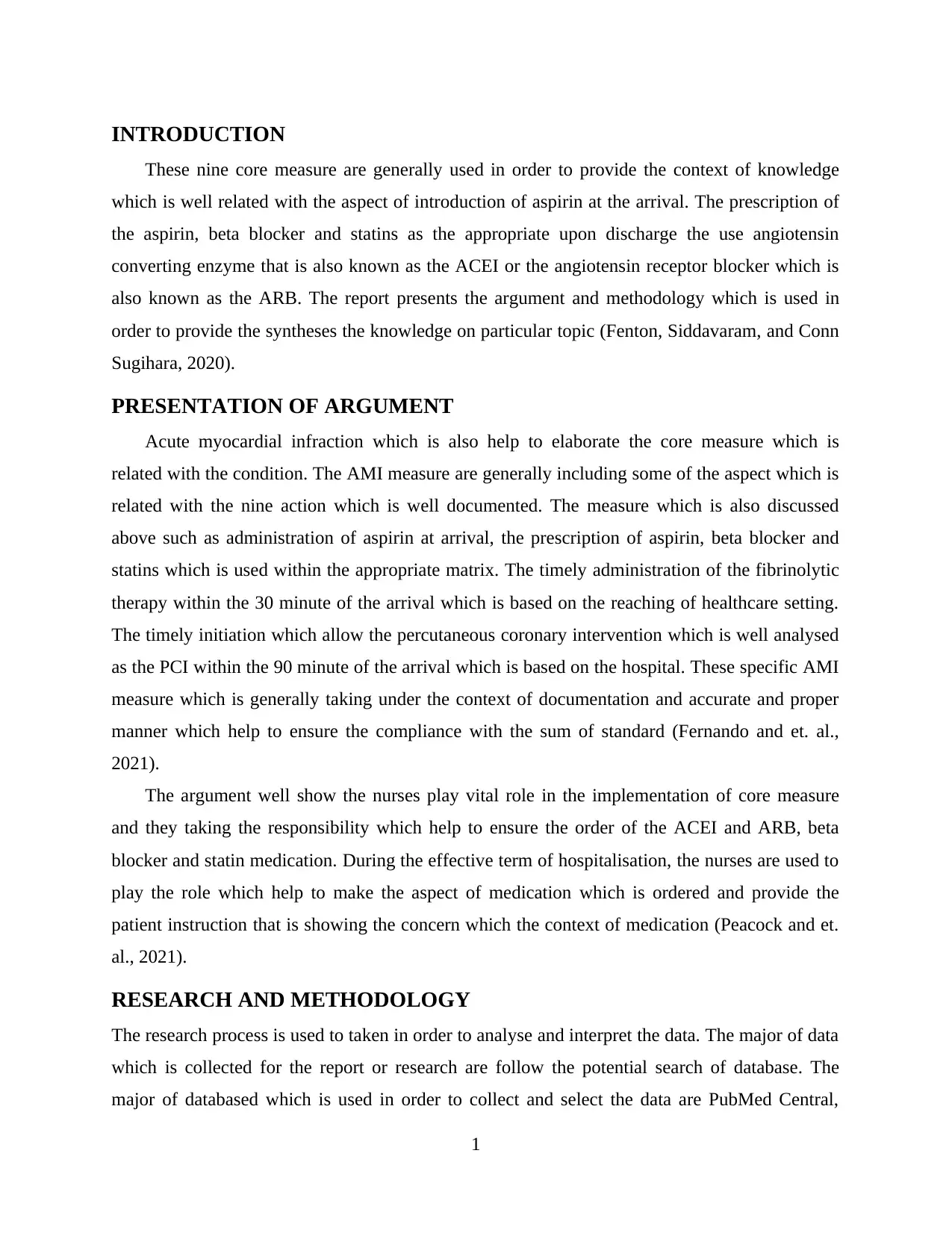
INTRODUCTION
These nine core measure are generally used in order to provide the context of knowledge
which is well related with the aspect of introduction of aspirin at the arrival. The prescription of
the aspirin, beta blocker and statins as the appropriate upon discharge the use angiotensin
converting enzyme that is also known as the ACEI or the angiotensin receptor blocker which is
also known as the ARB. The report presents the argument and methodology which is used in
order to provide the syntheses the knowledge on particular topic (Fenton, Siddavaram, and Conn
Sugihara, 2020).
PRESENTATION OF ARGUMENT
Acute myocardial infraction which is also help to elaborate the core measure which is
related with the condition. The AMI measure are generally including some of the aspect which is
related with the nine action which is well documented. The measure which is also discussed
above such as administration of aspirin at arrival, the prescription of aspirin, beta blocker and
statins which is used within the appropriate matrix. The timely administration of the fibrinolytic
therapy within the 30 minute of the arrival which is based on the reaching of healthcare setting.
The timely initiation which allow the percutaneous coronary intervention which is well analysed
as the PCI within the 90 minute of the arrival which is based on the hospital. These specific AMI
measure which is generally taking under the context of documentation and accurate and proper
manner which help to ensure the compliance with the sum of standard (Fernando and et. al.,
2021).
The argument well show the nurses play vital role in the implementation of core measure
and they taking the responsibility which help to ensure the order of the ACEI and ARB, beta
blocker and statin medication. During the effective term of hospitalisation, the nurses are used to
play the role which help to make the aspect of medication which is ordered and provide the
patient instruction that is showing the concern which the context of medication (Peacock and et.
al., 2021).
RESEARCH AND METHODOLOGY
The research process is used to taken in order to analyse and interpret the data. The major of data
which is collected for the report or research are follow the potential search of database. The
major of databased which is used in order to collect and select the data are PubMed Central,
1
These nine core measure are generally used in order to provide the context of knowledge
which is well related with the aspect of introduction of aspirin at the arrival. The prescription of
the aspirin, beta blocker and statins as the appropriate upon discharge the use angiotensin
converting enzyme that is also known as the ACEI or the angiotensin receptor blocker which is
also known as the ARB. The report presents the argument and methodology which is used in
order to provide the syntheses the knowledge on particular topic (Fenton, Siddavaram, and Conn
Sugihara, 2020).
PRESENTATION OF ARGUMENT
Acute myocardial infraction which is also help to elaborate the core measure which is
related with the condition. The AMI measure are generally including some of the aspect which is
related with the nine action which is well documented. The measure which is also discussed
above such as administration of aspirin at arrival, the prescription of aspirin, beta blocker and
statins which is used within the appropriate matrix. The timely administration of the fibrinolytic
therapy within the 30 minute of the arrival which is based on the reaching of healthcare setting.
The timely initiation which allow the percutaneous coronary intervention which is well analysed
as the PCI within the 90 minute of the arrival which is based on the hospital. These specific AMI
measure which is generally taking under the context of documentation and accurate and proper
manner which help to ensure the compliance with the sum of standard (Fernando and et. al.,
2021).
The argument well show the nurses play vital role in the implementation of core measure
and they taking the responsibility which help to ensure the order of the ACEI and ARB, beta
blocker and statin medication. During the effective term of hospitalisation, the nurses are used to
play the role which help to make the aspect of medication which is ordered and provide the
patient instruction that is showing the concern which the context of medication (Peacock and et.
al., 2021).
RESEARCH AND METHODOLOGY
The research process is used to taken in order to analyse and interpret the data. The major of data
which is collected for the report or research are follow the potential search of database. The
major of databased which is used in order to collect and select the data are PubMed Central,
1
⊘ This is a preview!⊘
Do you want full access?
Subscribe today to unlock all pages.

Trusted by 1+ million students worldwide
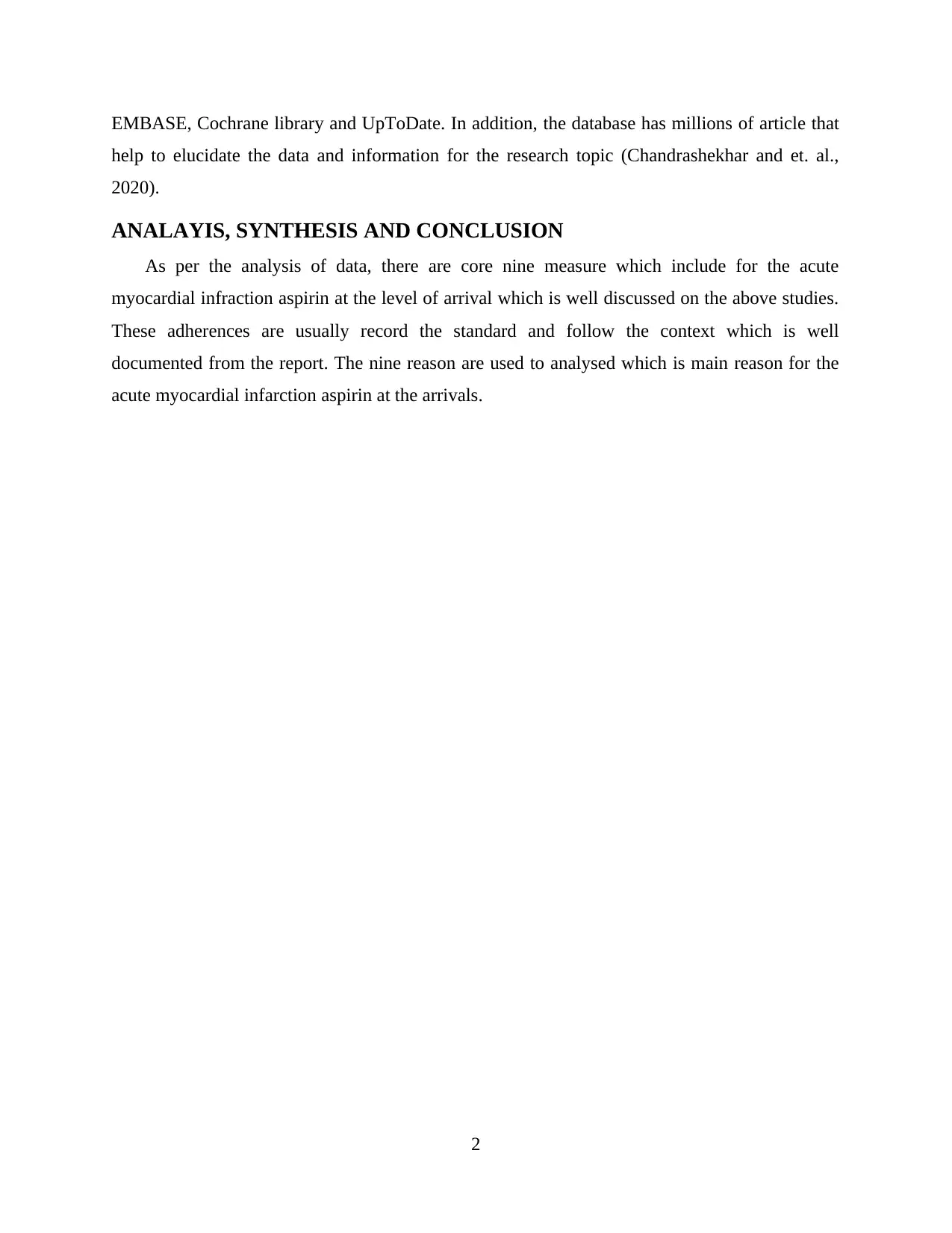
EMBASE, Cochrane library and UpToDate. In addition, the database has millions of article that
help to elucidate the data and information for the research topic (Chandrashekhar and et. al.,
2020).
ANALAYIS, SYNTHESIS AND CONCLUSION
As per the analysis of data, there are core nine measure which include for the acute
myocardial infraction aspirin at the level of arrival which is well discussed on the above studies.
These adherences are usually record the standard and follow the context which is well
documented from the report. The nine reason are used to analysed which is main reason for the
acute myocardial infarction aspirin at the arrivals.
2
help to elucidate the data and information for the research topic (Chandrashekhar and et. al.,
2020).
ANALAYIS, SYNTHESIS AND CONCLUSION
As per the analysis of data, there are core nine measure which include for the acute
myocardial infraction aspirin at the level of arrival which is well discussed on the above studies.
These adherences are usually record the standard and follow the context which is well
documented from the report. The nine reason are used to analysed which is main reason for the
acute myocardial infarction aspirin at the arrivals.
2
Paraphrase This Document
Need a fresh take? Get an instant paraphrase of this document with our AI Paraphraser
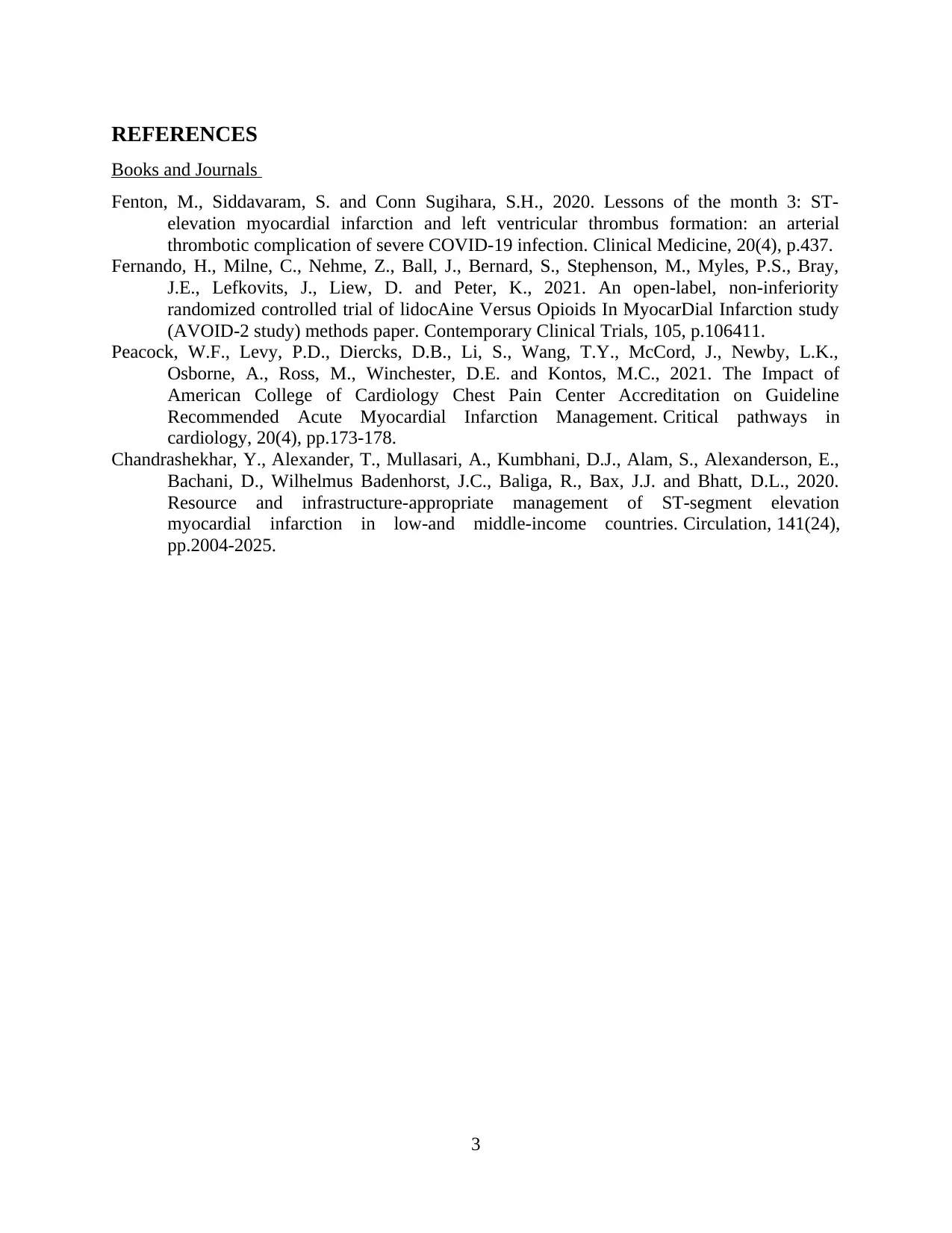
REFERENCES
Books and Journals
Fenton, M., Siddavaram, S. and Conn Sugihara, S.H., 2020. Lessons of the month 3: ST-
elevation myocardial infarction and left ventricular thrombus formation: an arterial
thrombotic complication of severe COVID-19 infection. Clinical Medicine, 20(4), p.437.
Fernando, H., Milne, C., Nehme, Z., Ball, J., Bernard, S., Stephenson, M., Myles, P.S., Bray,
J.E., Lefkovits, J., Liew, D. and Peter, K., 2021. An open-label, non-inferiority
randomized controlled trial of lidocAine Versus Opioids In MyocarDial Infarction study
(AVOID-2 study) methods paper. Contemporary Clinical Trials, 105, p.106411.
Peacock, W.F., Levy, P.D., Diercks, D.B., Li, S., Wang, T.Y., McCord, J., Newby, L.K.,
Osborne, A., Ross, M., Winchester, D.E. and Kontos, M.C., 2021. The Impact of
American College of Cardiology Chest Pain Center Accreditation on Guideline
Recommended Acute Myocardial Infarction Management. Critical pathways in
cardiology, 20(4), pp.173-178.
Chandrashekhar, Y., Alexander, T., Mullasari, A., Kumbhani, D.J., Alam, S., Alexanderson, E.,
Bachani, D., Wilhelmus Badenhorst, J.C., Baliga, R., Bax, J.J. and Bhatt, D.L., 2020.
Resource and infrastructure-appropriate management of ST-segment elevation
myocardial infarction in low-and middle-income countries. Circulation, 141(24),
pp.2004-2025.
3
Books and Journals
Fenton, M., Siddavaram, S. and Conn Sugihara, S.H., 2020. Lessons of the month 3: ST-
elevation myocardial infarction and left ventricular thrombus formation: an arterial
thrombotic complication of severe COVID-19 infection. Clinical Medicine, 20(4), p.437.
Fernando, H., Milne, C., Nehme, Z., Ball, J., Bernard, S., Stephenson, M., Myles, P.S., Bray,
J.E., Lefkovits, J., Liew, D. and Peter, K., 2021. An open-label, non-inferiority
randomized controlled trial of lidocAine Versus Opioids In MyocarDial Infarction study
(AVOID-2 study) methods paper. Contemporary Clinical Trials, 105, p.106411.
Peacock, W.F., Levy, P.D., Diercks, D.B., Li, S., Wang, T.Y., McCord, J., Newby, L.K.,
Osborne, A., Ross, M., Winchester, D.E. and Kontos, M.C., 2021. The Impact of
American College of Cardiology Chest Pain Center Accreditation on Guideline
Recommended Acute Myocardial Infarction Management. Critical pathways in
cardiology, 20(4), pp.173-178.
Chandrashekhar, Y., Alexander, T., Mullasari, A., Kumbhani, D.J., Alam, S., Alexanderson, E.,
Bachani, D., Wilhelmus Badenhorst, J.C., Baliga, R., Bax, J.J. and Bhatt, D.L., 2020.
Resource and infrastructure-appropriate management of ST-segment elevation
myocardial infarction in low-and middle-income countries. Circulation, 141(24),
pp.2004-2025.
3

4
⊘ This is a preview!⊘
Do you want full access?
Subscribe today to unlock all pages.

Trusted by 1+ million students worldwide
1 out of 6
Your All-in-One AI-Powered Toolkit for Academic Success.
+13062052269
info@desklib.com
Available 24*7 on WhatsApp / Email
![[object Object]](/_next/static/media/star-bottom.7253800d.svg)
Unlock your academic potential
Copyright © 2020–2025 A2Z Services. All Rights Reserved. Developed and managed by ZUCOL.
